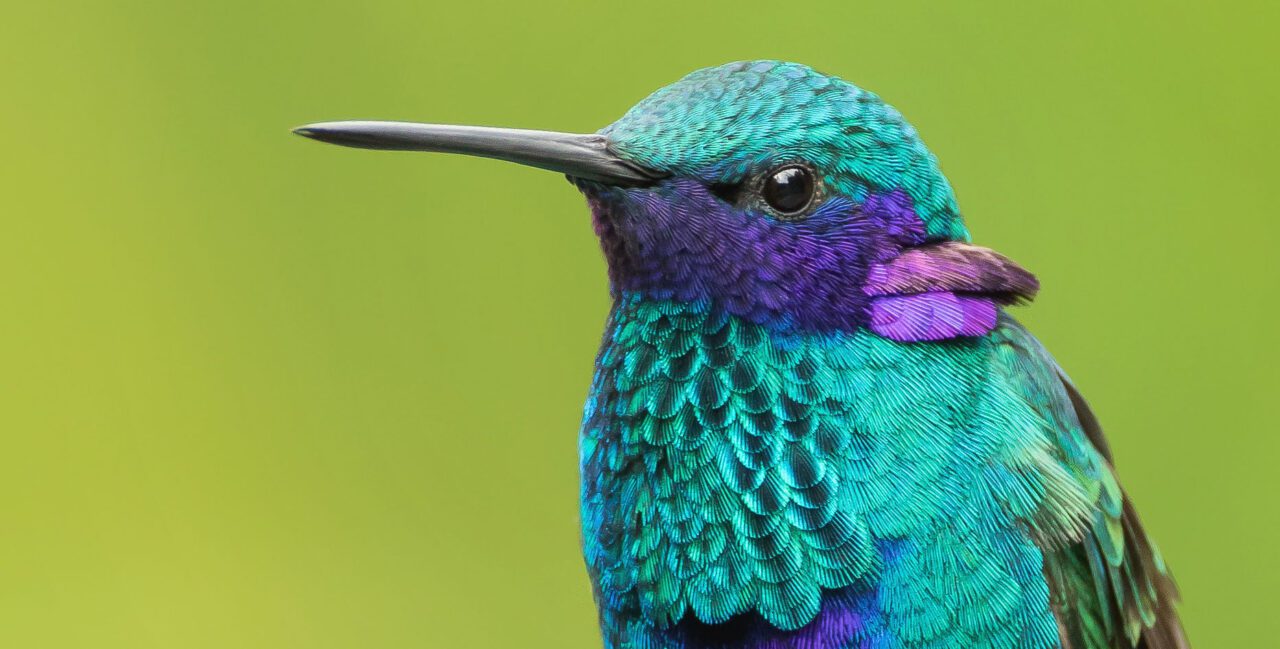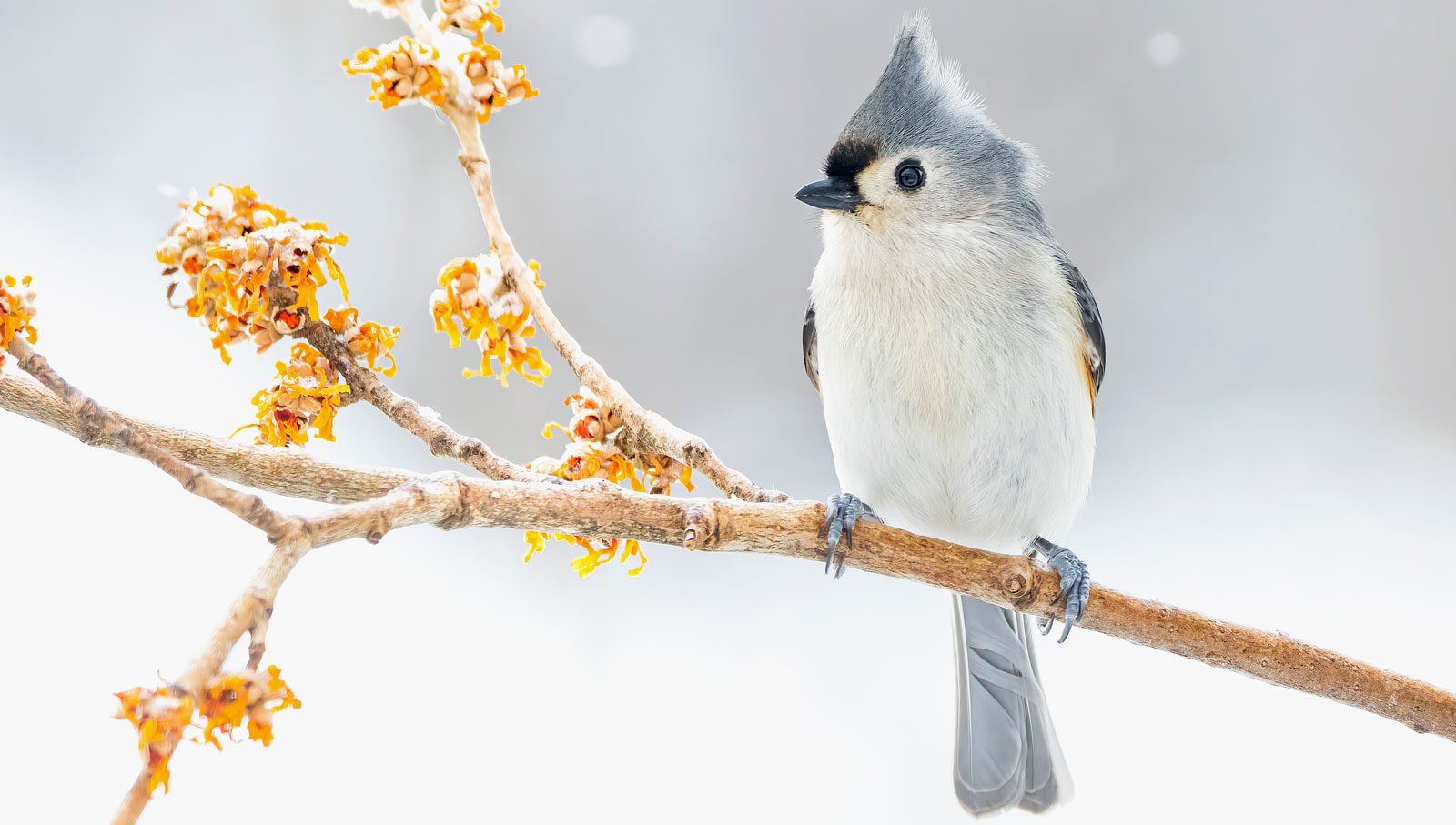It’s Thanksgiving time in the United States, and we hope all our Cornell Lab friends can celebrate the day with a tasty meal, warm companionship, and perhaps a crisp stroll outside to see some birds. We here at the Lab are most grateful to have you by our side, and for so many parts of the world we share. Here are just a few things we’re thankful for:
1. Beauty In Winter
Days get short, trees lose their leaves, and landscapes turn grayer—but birds remain. We’re always warmed, cheered, and inspired by the energy on show from even the smallest of birds in winter. A cardinal’s blast of color, the camaraderie of chickadee flocks, the dainty hardiness of a kinglet or a nuthatch. We love to put up a bird feeder and watch the show. (No feeder? Watch our live Bird Cams broadcasting from Ontario, New York, and Panama.)
2. Owl Hoots in the night
Haunting, thrilling, captivating, evocative, or all of the above? The mysterious sounds of owls are reminders of just how widespread these seldom-seen birds are. Great Horned, Barred, and Western or Eastern Screech-Owls can often be heard even in suburban settings—crack a window on a quiet night at bedtime and you might be surprised what you hear.
3. Raptors Returning to the Skies


In the last 50 years, North American raptors have mounted a comeback from historic lows. Across the board, raptor numbers have more than doubled, according to the 2019 State of the Birds Report. For those of us who grew up longing for a glimpse of a Bald Eagle or Peregrine Falcon, it’s one of the clearest examples of positive change in our lifetimes—with a hundredfold increase in Bald Eagles in the Lower 48 and Peregrine Falcons returning to long-empty aeries.
4. The Echoing Calls of Loons
Not everyone can live near a northern lakeshore—but we hope everyone gets a chance, at least once in their life, to hear the spine-tingling cries of a loon reverberating across the still water. It’s truly a bucket-list experience: here’s a short moment with some Yellow-billed Loons to whet your appetite.
5. Birds That Dance Like No One’s Watching
Reddish egrets foraging technique is spectacular to watch.
They’re basically herding and flushing schools of small fish in the shallows. And they do this by running and leaping and raising their wings.
They’re basically corralling the fish and trying to corner them in the shallows and eventually they’ll chase one down and jab down and spear this nice fish out of the water.
End of Transcript
Granted, there are very good evolutionary reasons why birds prance, shuffle, and sky-point—they may be wooing mates, working out who’s boss, or dazzling and distracting their prey. We love all those reasons—but we also love the underlying lesson that’s hard for a human to miss: sometimes you just feel like dancing.
6. The Songs of thrushes
Without throwing any shade on owls or loons, we’d like to suggest that thrushes are the world’s most beautiful songsters. In particular those in the genus Catharus, which include the lovely Hermit Thrush and sound like someone playing the flute in the far distance.
7. Brilliant Hummingbirds


Tiny, fast, acrobatic, and shimmering: what a gift to live with hummingbirds. Only the Western Hemisphere has them—more than 350 species across North and South America. (The Eastern Hemisphere is graced by the similarly glorious but unrelated sunbirds.) Hummingbirds are an example of evolution producing endless variations on the fascinating theme of iridescence, enabling these birds to shimmer with gemlike brilliance thanks to microscopic structures in their feathers.
8. elegance






A graceful neck; the elegant swoop of a tail; the simple economy of a spread wing: birds seem to bear their beauty so effortlessly. Whether complemented by shimmering color or rendered in subtle earth tones; calmly high-stepping across the grass or wheeling high in the wind; this is why we watch birds. They make us feel lighter than air.
9. Murmurations
European Starlings are perhaps the best known species for creating murmurations—those enormous flocks that artfully swirl across winter skies. Plenty of other species do it, too, from blackbirds to shorebirds. These breathtaking displays of freewheeling abundance never fail to get our pulse racing and spirits rising.
10. You, Our Supporters
We give thanks to our 205,000 supporters, and to all the people who share their sightings, images, and audio; explore the world with Merlin; and care for the natural world. You help to keep the Lab alive and inspired. Thank you.



